I stayed alone at a dessert-themed Tokyo hotel designed for sex and romance, and I recommend it to open-minded solo travelers
David McElhinney

- I paid $85 to stay one night at Sweets Hotel Ruby, a dessert-themed love hotel in Tokyo.
- Though the hotel is marketed toward couples, I thought it was also suitable for a solo traveler.
Tokyo's love hotels are marketed toward couples, but I wanted to see what it would be like to stay in one as a solo traveler.

To those unfamiliar with modern Japanese society, love hotels can seem seedy, discomforting, and highly unconventional. However, they're a regular part of life here, and have been around for centuries, even supporting the local economy.
In densely packed cities like Tokyo, most people live in small apartments and share space with parents, children, extended family members, or roommates. Plus, the walls in some Tokyo apartments are about as soundproof as a microphone.
So, it's standard for couples to book a love hotel for a night or a couple of hours during the day to enjoy each other's company in peace. Both parties have to be 18 and older to book.
Love hotels tend to be a pretty good value and typically have better amenities than standard business hotels. So even though they're technically lovers' dens, staying in one alone can be an enjoyable experience. I decided to try it for myself.
I stayed at Sweets Hotel Ruby in Dogenzaka, a neighborhood in Tokyo's Shibuya district.
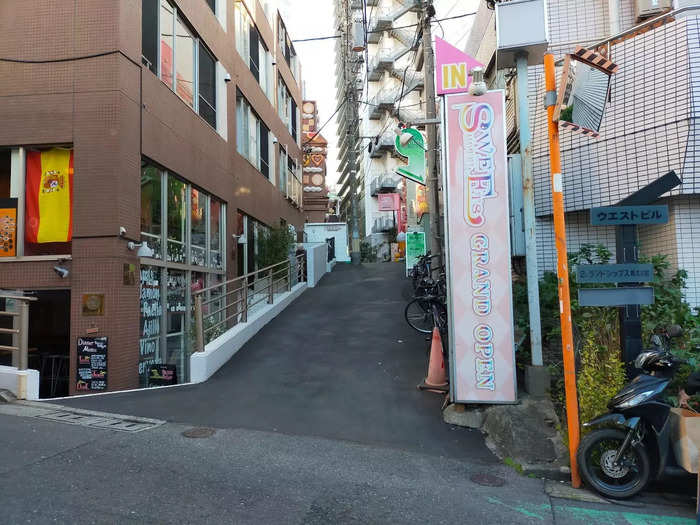
Dogenzaka is a hotbed of love hotels and other mizu-shobai establishments, which are generally sex-related businesses (mizu shobai literally translates to "water trade").
Home to an area called Love Hotel Hill, Dogenzaka has a slightly different vibe than a lot of the other neighborhoods in the pristine capital.
I've never felt unsafe there, and I think one of its most alluring qualities is that it feels a little rough around the edges.
Sweets Hotel Ruby is dessert-themed and has one of the neighborhood's most arresting exteriors.
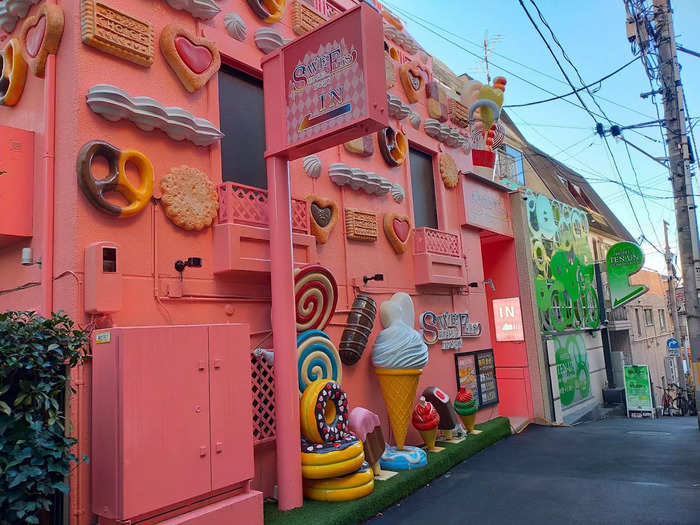
I've stayed in so many boring business hotels that I never pass up the opportunity to lay my head somewhere unusual, and Sweets Hotel Ruby definitely fits the bill.
When I arrived at the address, I found a pink building covered in decorative desserts, with oversized ice-cream cones and doughnuts surrounding the entrance.
I entered Sweets Hotel Ruby through a pink, windowless hallway that had fairground music filling the air.
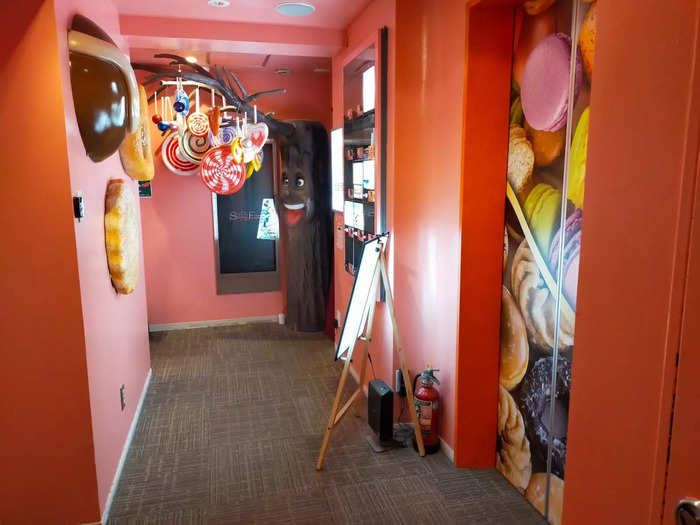
Some love hotels don't have a reception desk. Instead, the entire process — from room selection to booking to payment — is conducted through machines. This setup can be helpful for people who want to keep their stays more private.
At Sweets Hotel Ruby, the reception window was partially concealed, meaning I could only see the receptionist's hands and vice versa.
Adjacent to the reception window, there was a free service corner filled with sweets.
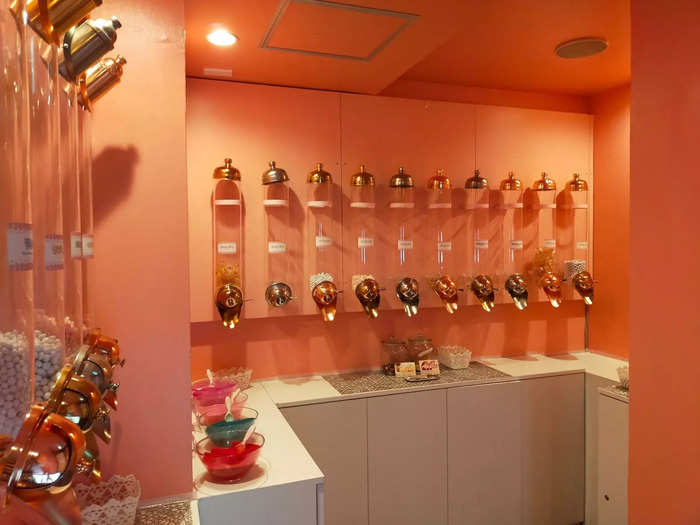
I don't particularly like sweets, but I'd imagine this feature is a bonus for guests with a sweet tooth.
I booked my room online, but I also could've selected my room via a selection panel beside the elevators.
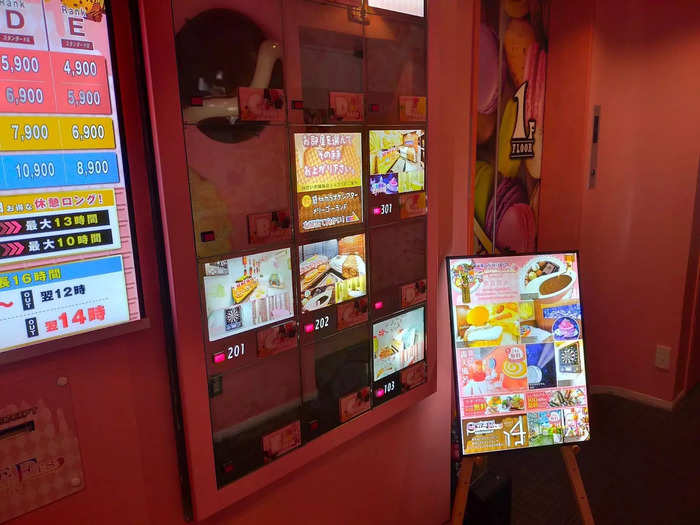
Prices can vary drastically in a love hotel depending on the room size, the day of the week, the time frame for which the booking is made, and the duration of time the room is booked.
Rest options, usually two- or three-hour stays, are often the cheapest, especially if they're between Mondays and Thursdays. Booking at a peak time, like midnight on a Saturday, costs more.
Most love hotels only allow guests to book rest options during the day and require those arriving in the evening to pay for an overnight stay.
I stayed at Sweets Hotel Ruby on a Tuesday night, so the $85 I paid was in the midrange for this particular hotel.
One of the primary advantages of staying at love hotels is that they're open 24/7, meaning you can book a slot at any time as long as rooms are available.
Being open around the clock can come in handy in a city like Tokyo, where the trains stop running around midnight and late-night taxi prices can be extortionate.
I stayed in room 303, which looked like it belonged inside a gingerbread house.
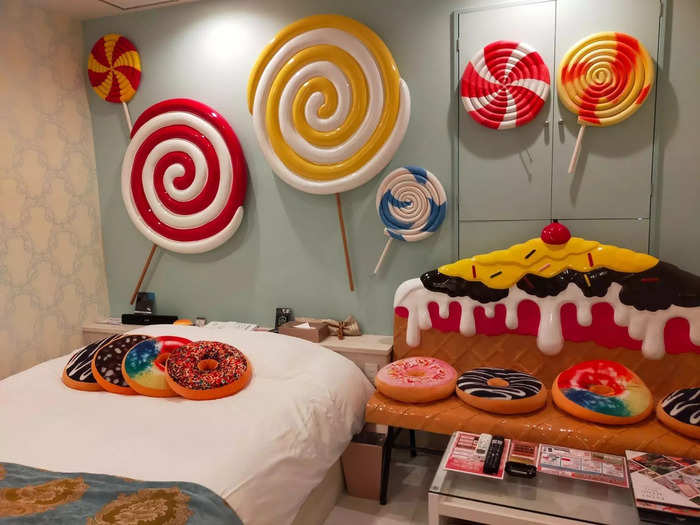
The double bed and abundance of doughnut pillows on top of it were comfortable, but the cake-and-wafer bench was not. Made out of a rigid metallic material, this piece of furniture seemed way more stylish than it was practical.
My room initially appeared windowless, but I later found a window behind cupboard-like doors in the wall, which is a standard feature in love hotels.
Most importantly, the room felt clean, though this comes as little surprise in a country as fastidious as Japan. To put it bluntly, cleanliness is an absolute must when sleeping in a room that's typically used for sexual encounters.
Most love hotel rooms have fans built into the roof to maintain ventilation and block out excessive sound on nights when the hotel and surrounding areas are busy. You can usually turn the fans off if you find them irritating.
Various menus were scattered across the coffee table in my room.
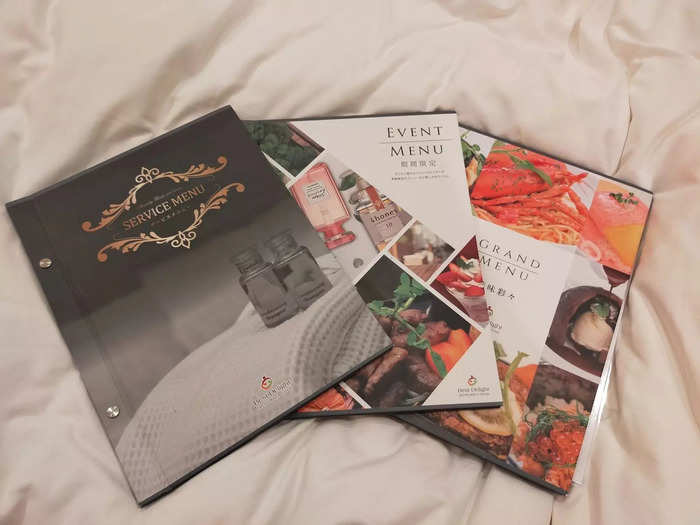
The menus listed things I could buy, like food, alcohol, toiletries, contraceptives, costumes, toys, and more.
There was also a TV in my room that showed standard Japanese programming, like sumo.
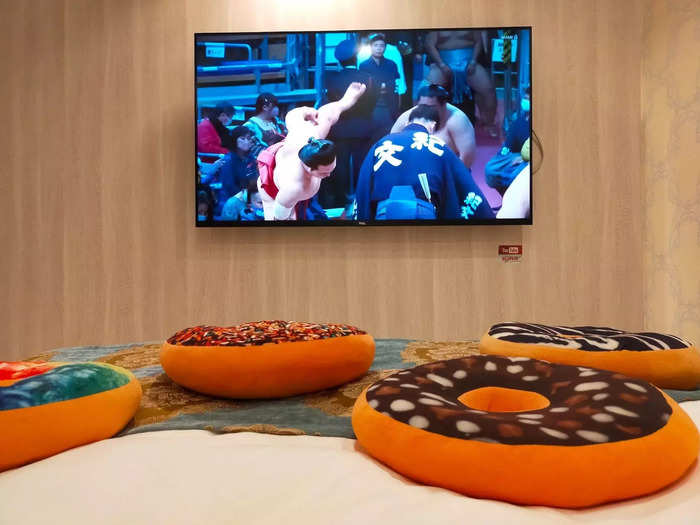
The TV also had streaming services such as Netflix, Hulu, and YouTube. Adult-only options were also available.
My room had different lighting options that I could turn on and off.
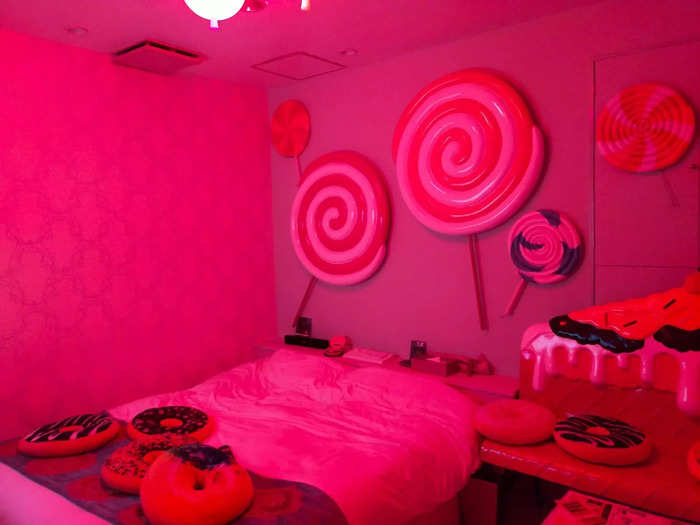
If you fiddle around with the buttons on the console in a love-hotel room, there's a chance you'll be surprised.
The bathroom was one of the room's nicest features and felt spacious for one person.

I'd say one of the principal reasons to stay in a love hotel is the luxurious bathrooms.
They're made for couples, so individual travelers get to enjoy more space and larger bathtubs than those often found in run-of-the-mill accommodations.
The bathroom in my room featured a deep pink tub nestled in the corner of a multicolored shower room. I also found a collection of bubble-bath products and shower creams.
There was also a sink and a screen on the bathroom mirror, but I couldn't figure out the latter's purpose.
Before bed, I went for a stroll in the neighborhood and realized that the hotel's back entrance was just as over-the-top as the front one.
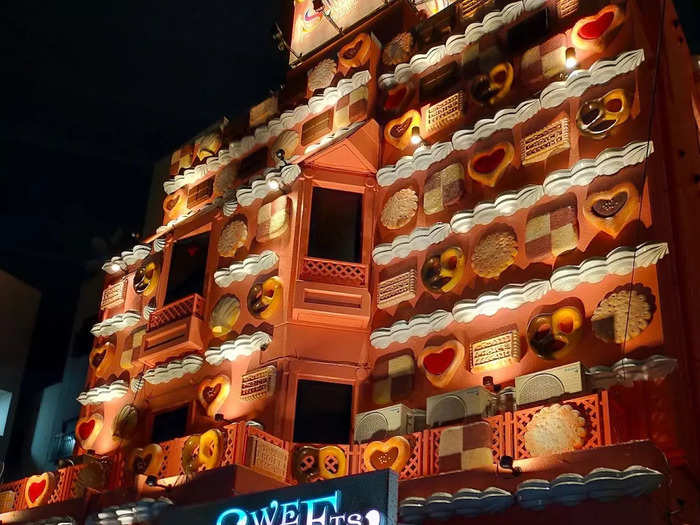
At night, the exterior of Sweets Hotel Ruby was lit up from below. The exterior looked like it was covered in cookies and lollipops.
Dogenzaka is near a lot of other bustling neighborhoods and has access to all types of entertainment.

A lot of the businesses in Dogenzaka are indeed love hotels, but the neighborhood also rubs shoulders with the central avenues that funnel traffic into and out of Shibuya.
Nearby, I found craft-beer bars; nightclubs; yakitori joints, which sell grilled chicken; cosmopolitan bistros; standing sushi shops; and traditional izakaya, which are Japanese gastropubs.
Because I wasn't bothered by the idea of a love hotel, I enjoyed staying in one as a solo traveler and would do it again.
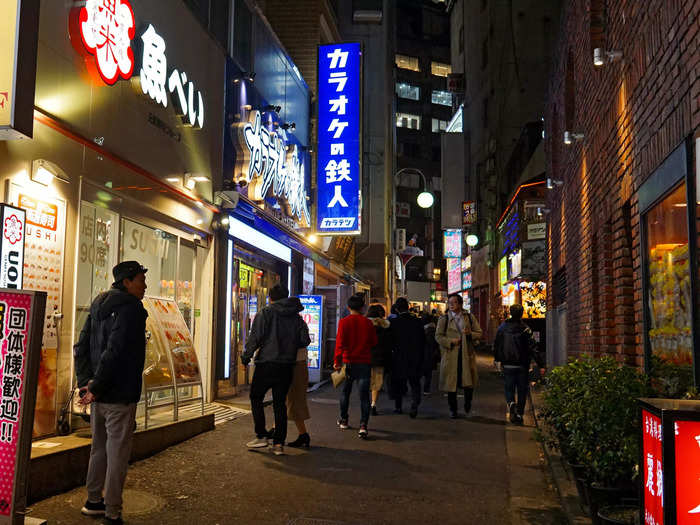
I'm not someone who usually chooses places to stay based on decorations, so this was the first time I've stayed at a love hotel that has such a distinct and overt theme. It didn't necessarily bother me, but I do tend to be more drawn to simple designs.
I've had an equally comfortable experience with the same amenities at less embellished love hotels, and they usually cost less too.
If you want to stay at a themed love hotel but the Sweets Hotel Ruby isn't what you have in mind, there are plenty of other options.
Dogenzaka has other love hotels that are inspired by the swing era of the 1930s and 1940s, tropical climates, cheap American motels, and more.
Kinshicho, an area in northeast Tokyo, is also full of love hotels. But in my opinion, Dogenzaka has the most impressive selection, and people shouldn't automatically write these spots off.
Popular Right Now
Popular Keywords
Advertisement